Vienna, Austria
Our internal clocks are still operating 8 time zones behind, which gave Bear and I an opportunity to experience the phenomena of a Vienna night…
…ghoulies and ghosties and long-leggedy beasties, and things that go bump in the night.
Unable to sleep, we walked the streets of Vienna long after dark.
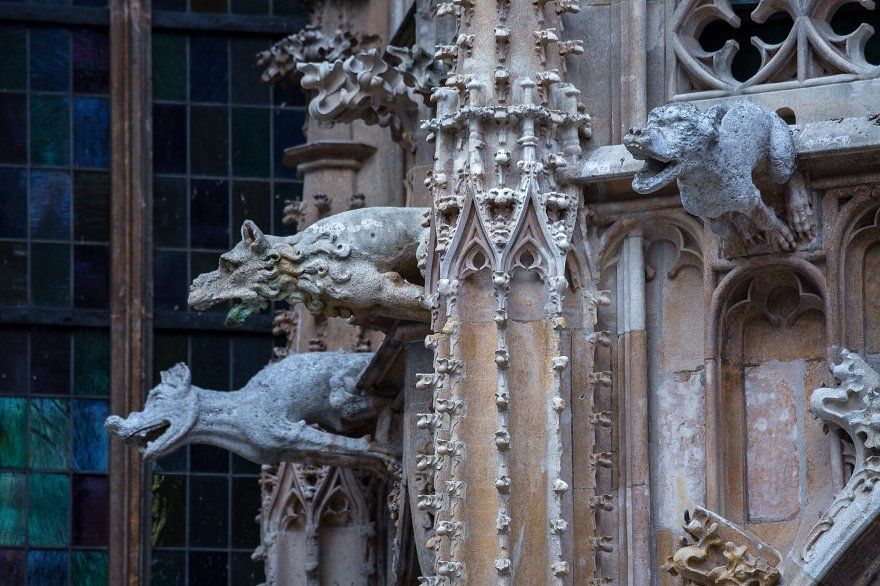
The gargoyles on St Stephen’s Cathedral kept a watchful eye on us, which provided no comfort at all.
A phantom appeared in a window at an intersection near the Opera House. I don’t know what or who it represents, and we didn’t linger long enough to find out.
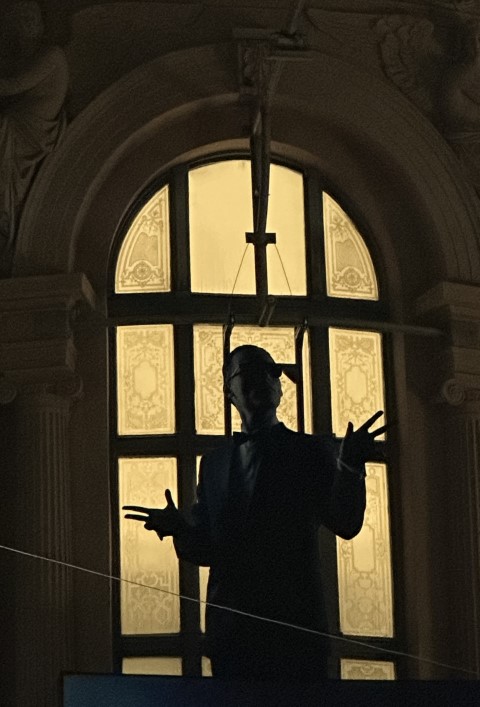
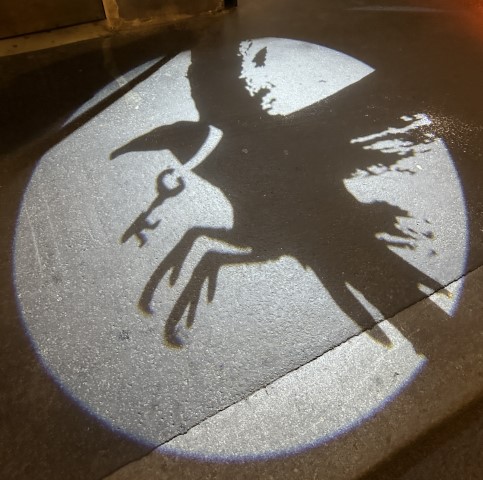
This hologram appeared at our feet on a sidewalk halfway down an otherwise dark ally. The aberration swirled around us a few times, then flew off without any indication of why it had come, or what the key around the bird’s neck unlocks.
We never encountered many people on our nocturnal tour; a few drunk tourists after last call, but they were more annoying than scary. It wasn’t until we reached 10 Raunensteingasse Street that things started to get frightening.
I had read about Elizabeth Plainacher, a woman accused of witchcraft and burned at the stake in Vienna, in 1583. Her trial took place at a courthouse in the city centre, not far from our hotel. We ventured to the site, in the dark, to check it out.
10 Raunensteingasse is now a law office. I assume they no longer deal in witch trials.
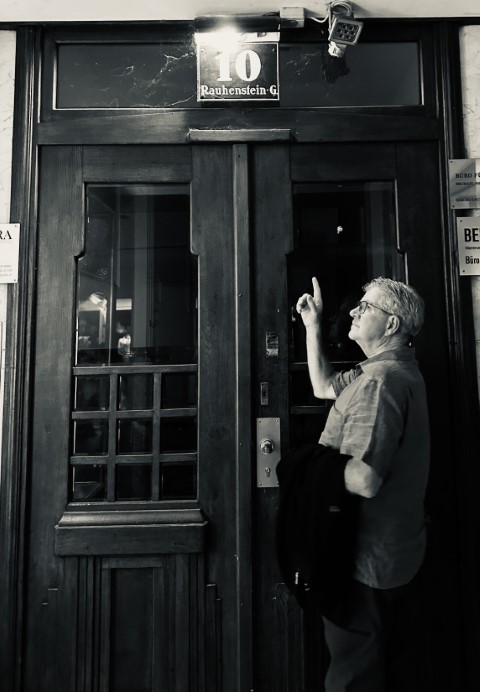
Standing in the entrance of the former courthouse, under a spiderweb-obscured dim light, gave me an uneasy feeling. It wasn’t witches I was afraid of; it is the humans who conjure them that scare the wits out of me.
Thou shall not suffer a witch to live.
– Exodus 22:18
Elizabeth Plainacher was a poor woman, twice a widow, who had raised several of her own children and was caring for four grandchildren. Elsa, as she was called, became the guardian of her daughter’s children when she died giving birth to the fourth child, Anna. All of the grandchildren were sickly, especially Anna, who was prone to seizures (probably epilepsy, but no one knew about the disease at the time). Their father was a violent, drunken man, who cared little about the children’s welfare.
Elsa cared for her grandchildren as best she could. She turned to herbal remedies to treat all of their ailments, especially Anna who continued to suffer from seizures.

This was at a time when the Catholic church had deemed that all medical conditions were the result of Demonic possession and only clergy were permitted to administer healing. Earthly practitioners administering drugs or potions, like the herbs Elsa was using, were forbidden and subject to prosecution.
In early 1583, a series of events occurred that turned Elsa’s miserable life into a nightmare. Her third husband and the three oldest grandchildren all died of an unknown illness. Anna, now 15, became delusional, and very ill. She was diagnosed by a clergyman, who determined that Anna was suffering from aggravated Demonic possession. Several exorcisms didn’t alleviate her suffering.
To make matters worse, the children’s father, Georg Schlutterbauer reappeared, making allegations of witchcraft and accusing Elsa of killing his other three children. He alleged that Elsa was allowing the Devil to possess Anna.
Elsa had converted to Protestantism at some time during her life, so the ruling Roman Catholic church of the day was quite willing to hear Schlutterbauer’s accusations.
As a side note, St Stephen’s Cathedral had just been completed in 1578. The massive church gave Vienna a surge of Roman Catholic fervour, emboldening church leaders to expand their influence and exercise control of the population.
St Stephen’s Cathedral at night.
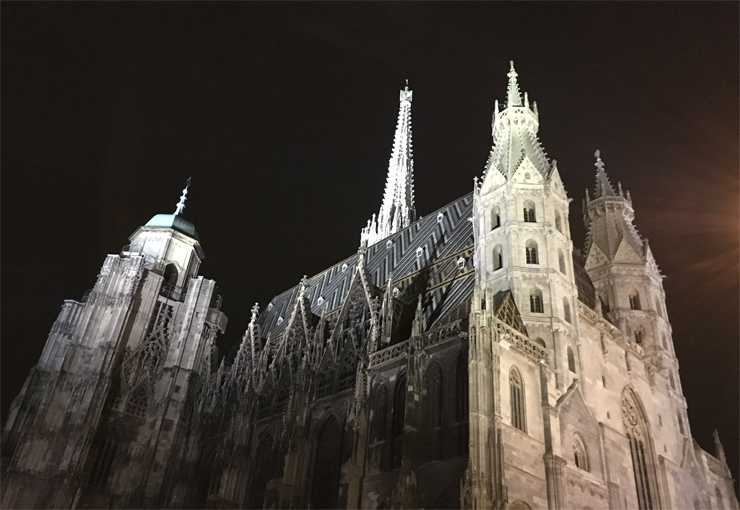
The Bible doesn’t mention epilepsy, surely one of God’s more cruel inventions.
What it does say (Numbers 5:11-13) is that guilt or innocence can be determined by forcing the accused “to drink a mixture of water and dust from the Tabernacle floor”.
Elizabeth Plainacher was arrested in mid 1583. Attorneys testified that Elsa, then 70, “was only old and weak-minded”, but Roman Catholic Priest, Georg Scherer, insisted that she be tried for witchcraft.
Elsa Plainacher was tortured three times in the basement of Raunensteingasse courthouse, until she confessed to the charge of witchcraft. She was sentenced to be burned at the stake in a goose field near the Danube River.
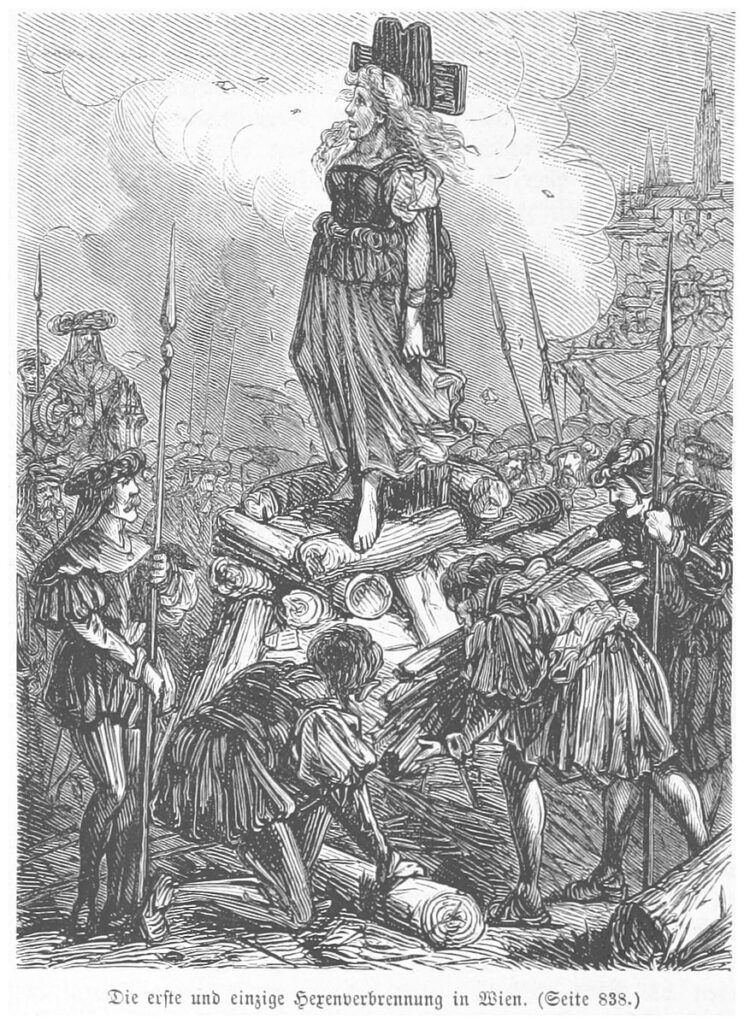
Elizabeth Plainacher bound for execution by burning. September 27, 1583.
Recently completed St Stephen’s Cathedral can be seen in the background.
This morning, Bear and I visited the location where the execution occurred. We waited until daylight; I wasn’t sure I could handle the trauma of an execution site, in the dark.
There is a sign with information about Elsa, and a water pump at the location where she died.
Elisabeth Plainacher’s ashes were strewn in the Danube River nearby.
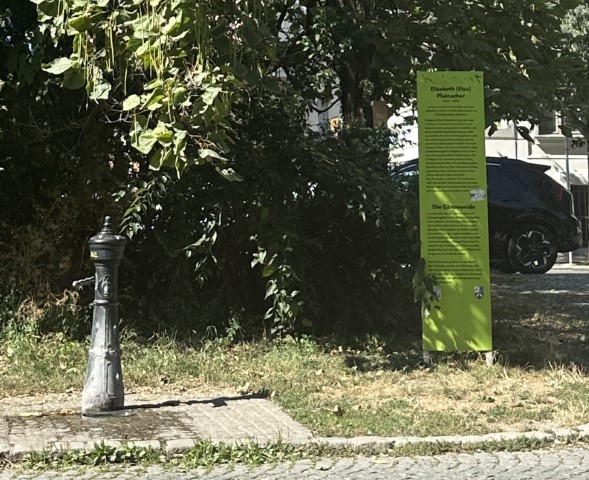
Our hotel is located halfway between the Raunensteingasse courthouse and the execution site. If we had been in Vienna in 1583, we could have watched as Elsa was tortured, tried, found guilty of witchcraft, tied to a horse’s tail, and dragged to the river site for execution.
If we had been there, I would have stopped the execution procession and tried to reason with the clergy, the executioners, and the people gathered to watch the spectacle.
I would have told them what little I know about epilepsy and mental illness.
I would also tell them that they should think carefully before taking the Bible literally.
“There are no witches”, I would say, “never have been”. “Oh, and slavery is a very bad idea, despite what the Bible says”.
I would speak directly to the common people. I would say:
“Christian authority is a poor platform for decision making, and blind faith is an unacceptable substitute for science”.
I might also say:
“Just because someone wears a pointy hat doesn’t mean they have dominion over your thoughts, defer to common sense and ignore directives from authority if they don’t seem moral or just to you.”
If I had spoken those words on September 27, 1583, there is absolutely no doubt in my mind that two people that night would have been…
… burned at the stake.



GG
Probably a good idea for you to stay away from religious BBQs for a while.
Russ Paton
Point taken…
Adam Paton
That’s a sad story! I wonder if she was ever pardoned for her ‘crimes’. Interestingly, the Church of Scotland apologized for their persecution of accused witches. The apology came in 2022, which is…better late than never, I suppose.
Russ Paton
I will check that out, if they haven’t, they should…